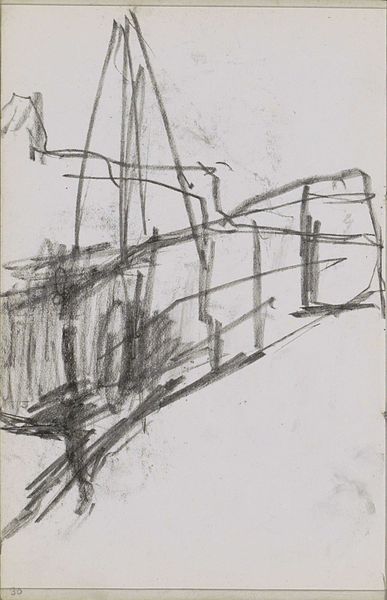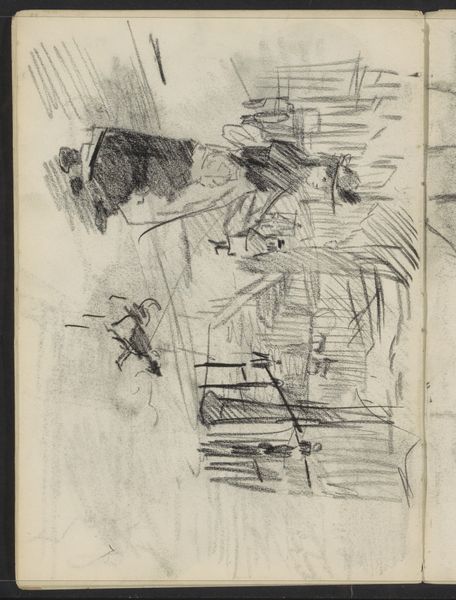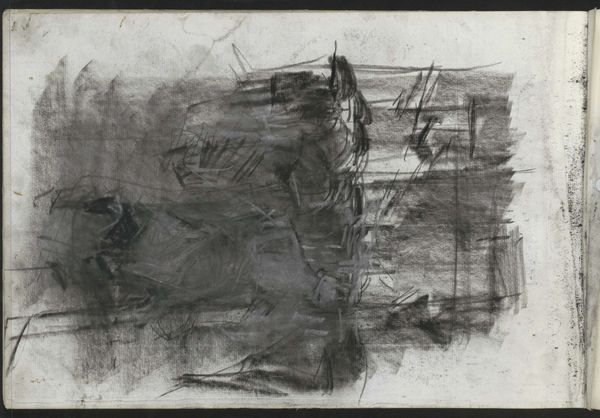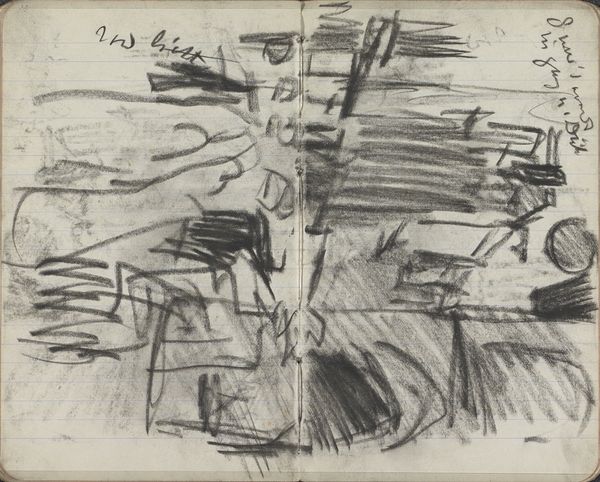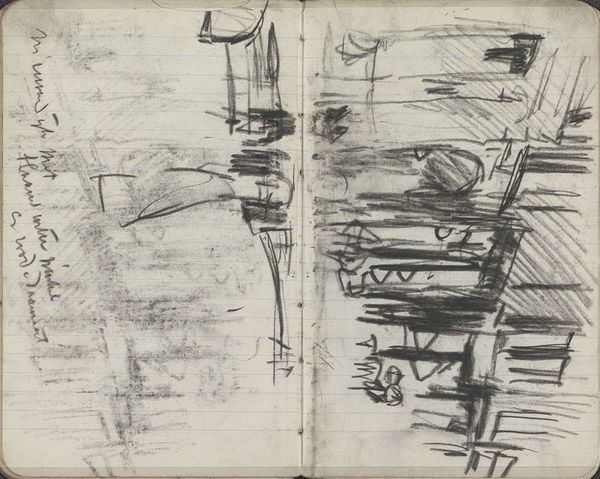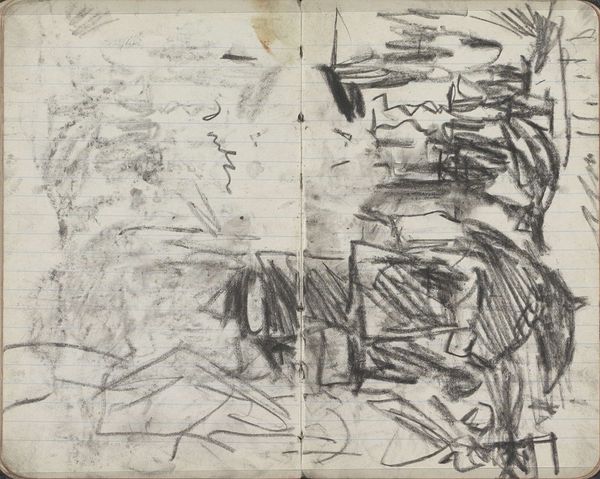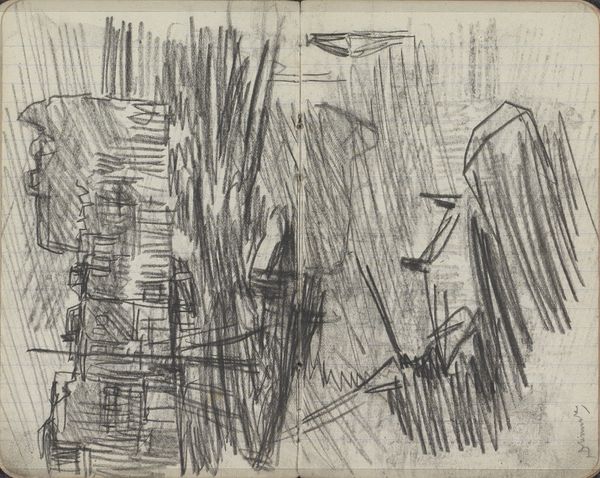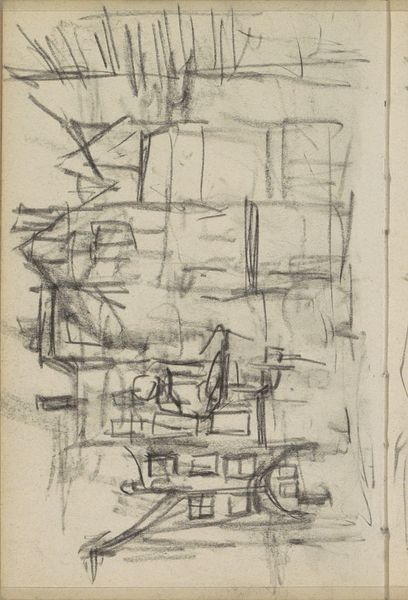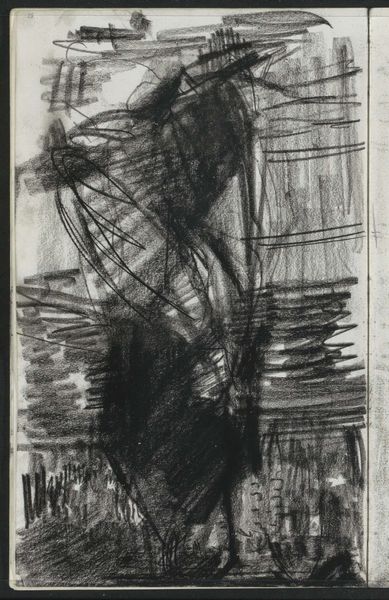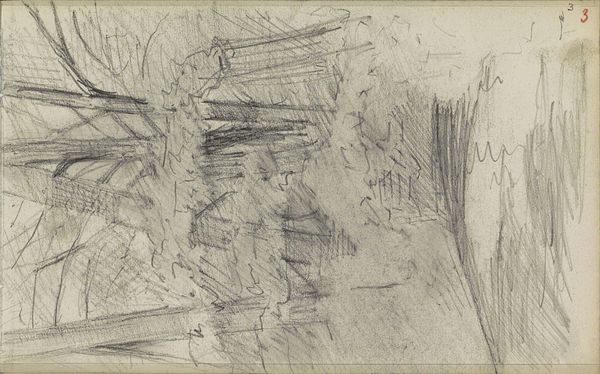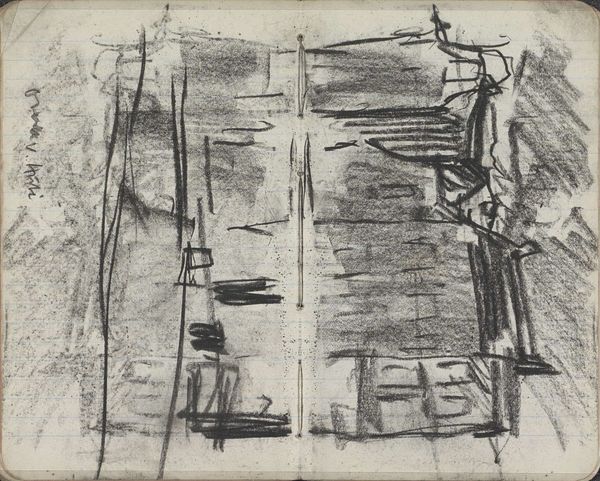
drawing, graphite, charcoal
#
drawing
#
abstraction
#
graphite
#
cityscape
#
charcoal
Copyright: Rijks Museum: Open Domain
Curator: Gazing upon this, the immediate sensation is almost dizzying. A chaotic landscape… yet undeniably captivating. Editor: We’re observing “Stadsgezicht,” or "Cityscape" by Isaac Israels. Executed between 1875 and 1934, this drawing employs both graphite and charcoal to render an abstract interpretation of urban architecture. The artwork is proudly housed here at the Rijksmuseum. Curator: You nailed it. That frenetic energy – it practically jumps off the page. It's like a memory fading, a half-remembered dream of city life, isn't it? Streaks of charcoal, hinting at forms that threaten to dissolve. Editor: The beauty of the work resides in its structural tension. The bold horizontal strokes of charcoal, reminiscent of building facades, conflict beautifully with the scribbled vertical lines suggesting movement, instability, or perhaps scaffolding. A sort of material interplay. Curator: Exactly! Scaffolding… or perhaps the ribs of a ship, tossed in a stormy sea? Don't you feel that undercurrent of uncertainty? The cityscape – a structure of permanence – is rendered here as something fragile, transient even. It’s wonderfully unnerving. Editor: That is precisely the emotional paradox inherent to cityscapes—simultaneously permanent yet relentlessly impermanent. Semiotically, one can argue that it operates using an indexical trace of city-specific locations, transforming them, in effect, to ghostly memories in charcoal. Curator: Oh, "ghostly memories," I love that. The way Israels uses shadow… it's not just about depicting form; it's about obscuring it, isn’t it? To reveal just a sliver of light, to make us strain to discern shapes – like looking through a grimy windowpane. What does it say, finally, about modern urban experience? Editor: Indeed. The dark, almost oppressive shading around the supposed structure emphasizes this tension. The work eschews narrative—leaving only abstract expression of our urban reality. It also seems a statement about subjective observation itself; what can we truly “see” or ever hope to permanently retain, accurately? Curator: Perhaps what Israels has so poignantly rendered is, precisely, not what he saw but how that glimpse *felt*. Raw. Undeniably urban. Editor: Ultimately, “Stadsgezicht” urges us to move beyond conventional seeing.
Comments
No comments
Be the first to comment and join the conversation on the ultimate creative platform.

